In the circuit shown, the potential difference between A and B VAandVB is equal to_______V.
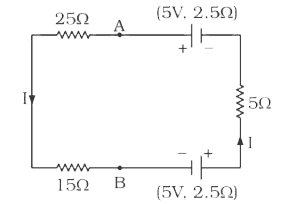
KVLa→b→c→d→a
I0.5+2.5+5+2.5+25)=5+5
I=105=15A
KVLA→a→b→B
VA−I(25)−I(5)=VB
VA−VB=I(40)=15×40VA−VB=8 volt
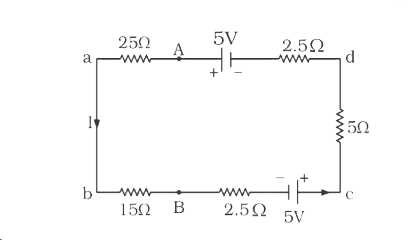
Topper's Solved these Questions
- BOOK - VMC MODULES ENGLISHCHAPTER - DC CIRCUITEXERCISE - LEVEL-2 DAILY TUTORIAL SHEET-110videos
DC CIRCUIT
- BOOK - VMC MODULES ENGLISHCHAPTER - DC CIRCUITEXERCISE - LEVEL-2 DAILY TUTORIAL SHEET-210videos
DC CIRCUIT
- BOOK - VMC MODULES ENGLISHCHAPTER - DC CIRCUITEXERCISE - LEVEL-1 DAILY TUTORIAL SHEET-415videos
DC CIRCUIT
- BOOK - VMC MODULES ENGLISHCHAPTER - CURRENT ELECTRICITYEXERCISE - IN-CHAPTER EXERCISE-F10videos
CURRENT ELECTRICITY
- BOOK - VMC MODULES ENGLISHCHAPTER - DYNAMICS OF A PARTICLEEXERCISE - JEE Advance (Archive) Level - II (SINGLE OPTION CORRECT TYPE )31videos
DYNAMICS OF A PARTICLE
Similar Questions
In the circuit shown, the potential difference between A and B is .
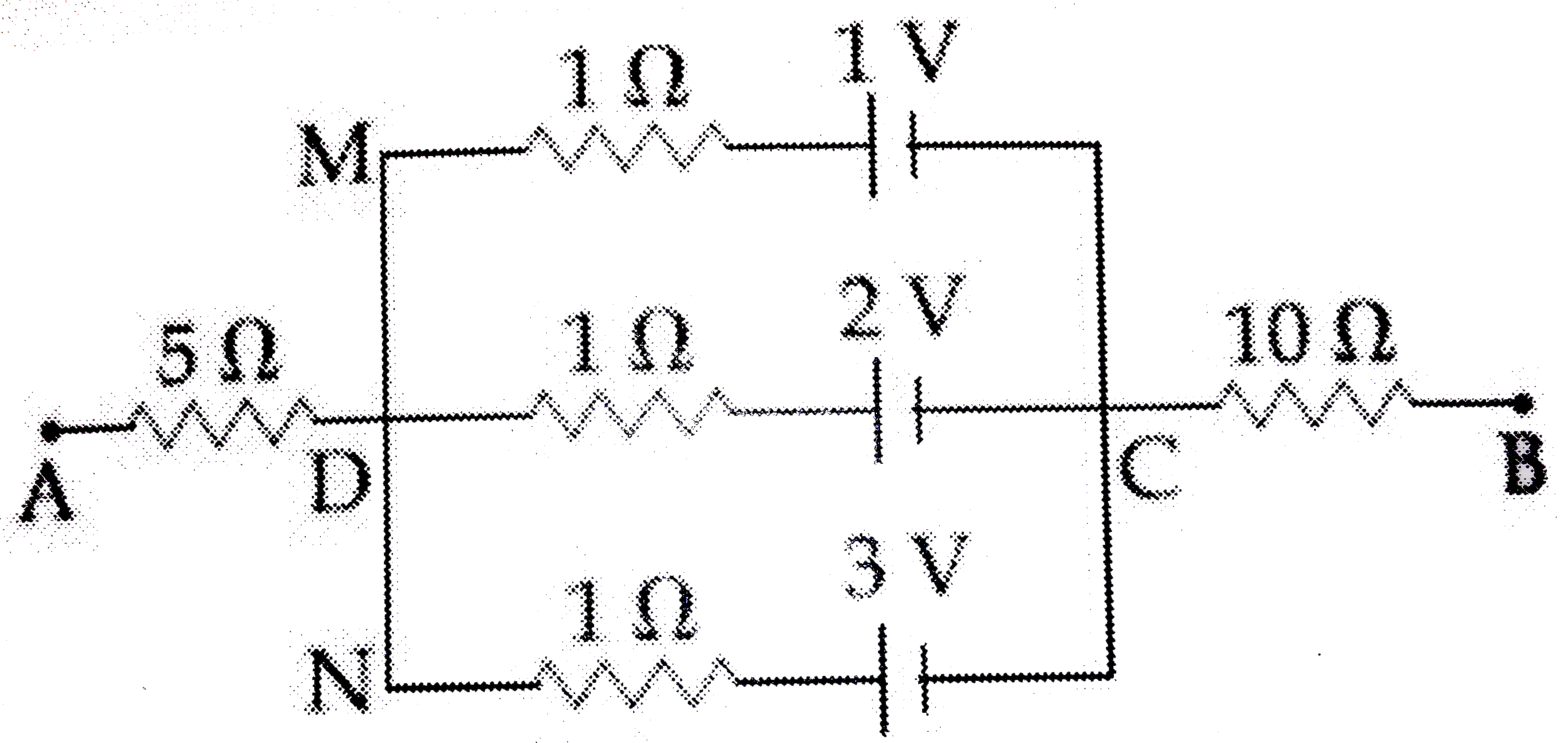 View Solution
View SolutionIn the circuit shown, the potential difference between the points G and H, VG−VH is equal to _________ V.
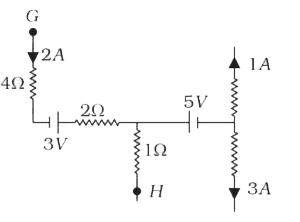 View Solution
View SolutionIn the circuit shown, the potential differences, V1 ( between A and B ) and V2 ( between C and D ), are
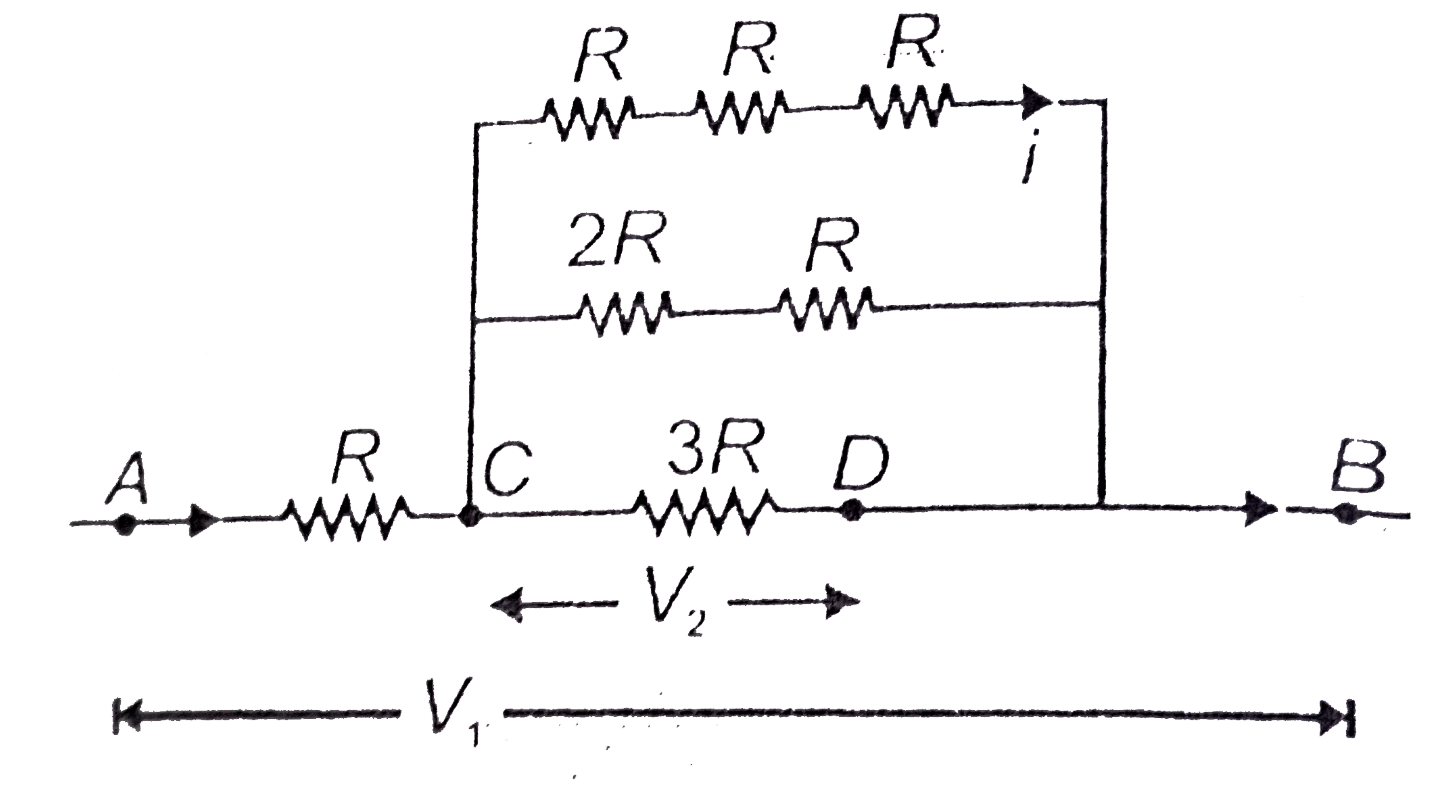 View Solution
View SolutionIn the circuit shown, what is the potential different VPQ ?
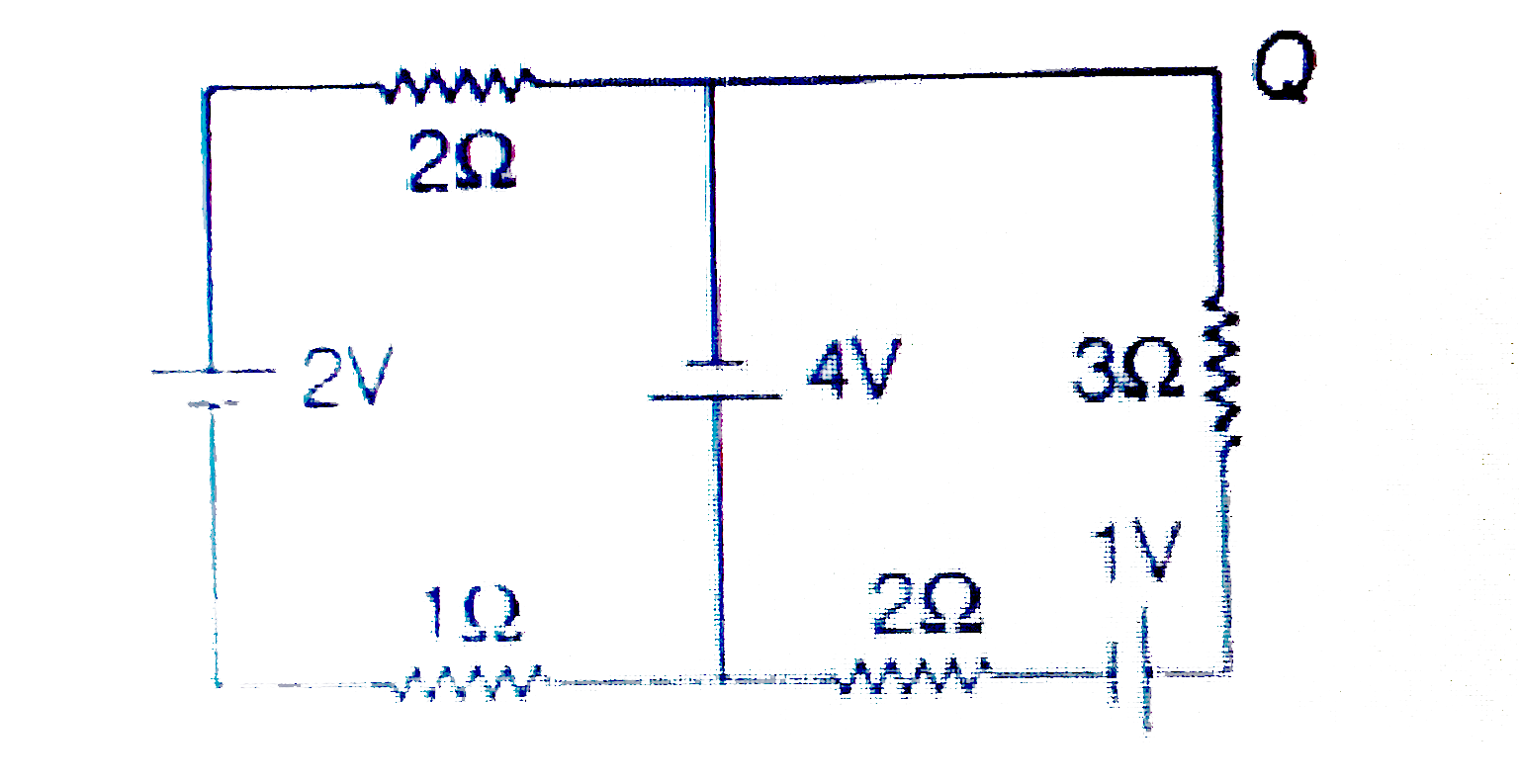 View Solution
View SolutionIn the circuit shown, what is the potential difference VPQ in volts ?
 View Solution
View SolutionThe potential difference between the points A and B in the circuit shown is 16 V, Which is/are the correct statement(s) out of the following?
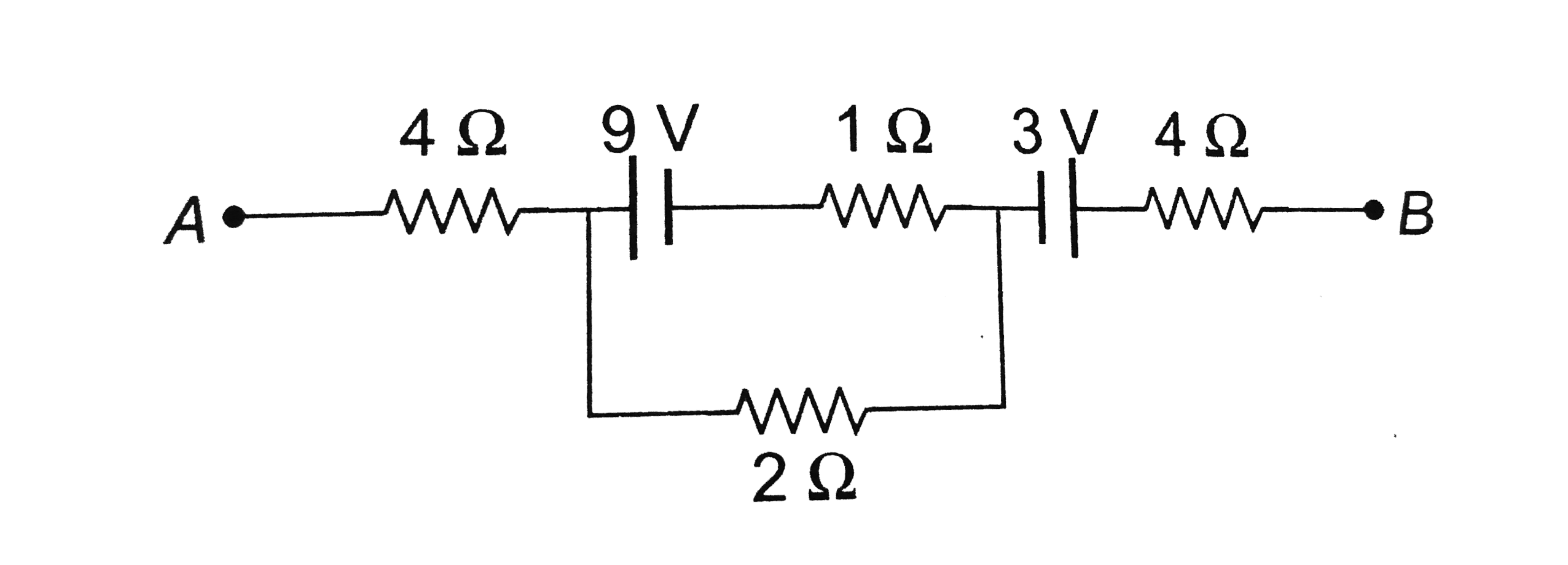 View Solution
View SolutionThe following figure shows a part of a circuit,the potential difference between C and B(VC−VB) is
 View Solution
View SolutionAt steady state, the potential difference between points C and D in the circuit shown is equal to ________ V.
 View Solution
View Solution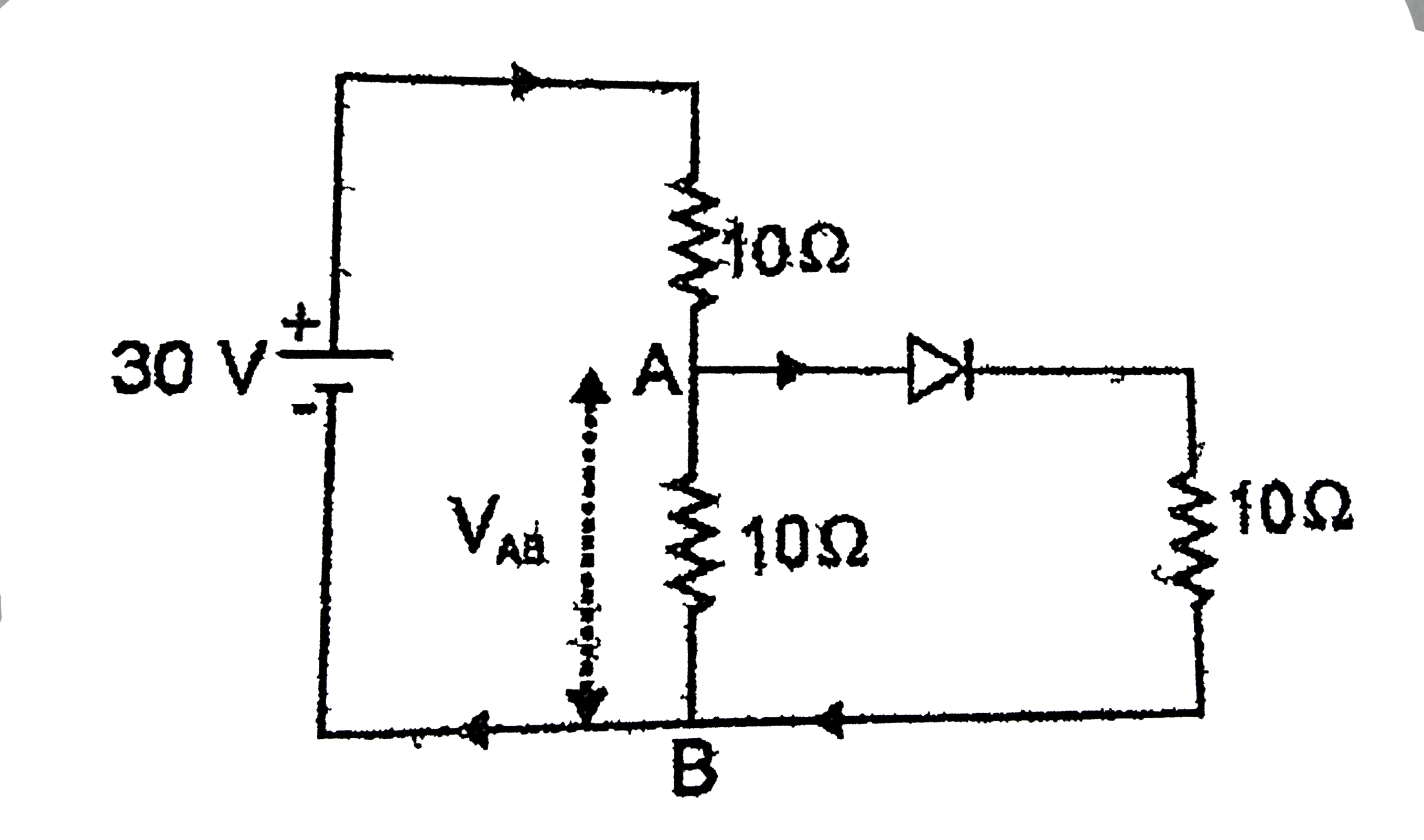
For given circuit potential difference VAB isView Solution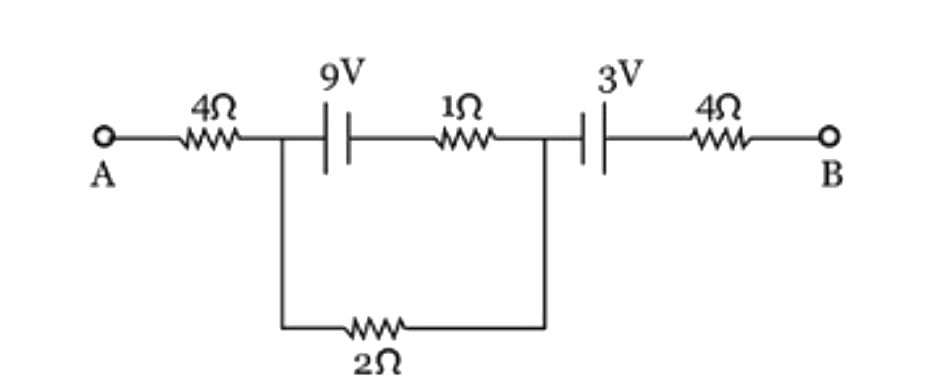
In the part of the circuit shown in the figure, the potential difference between points VA−VB=16V. The current passing through the 2Ω resistance will beView Solution

